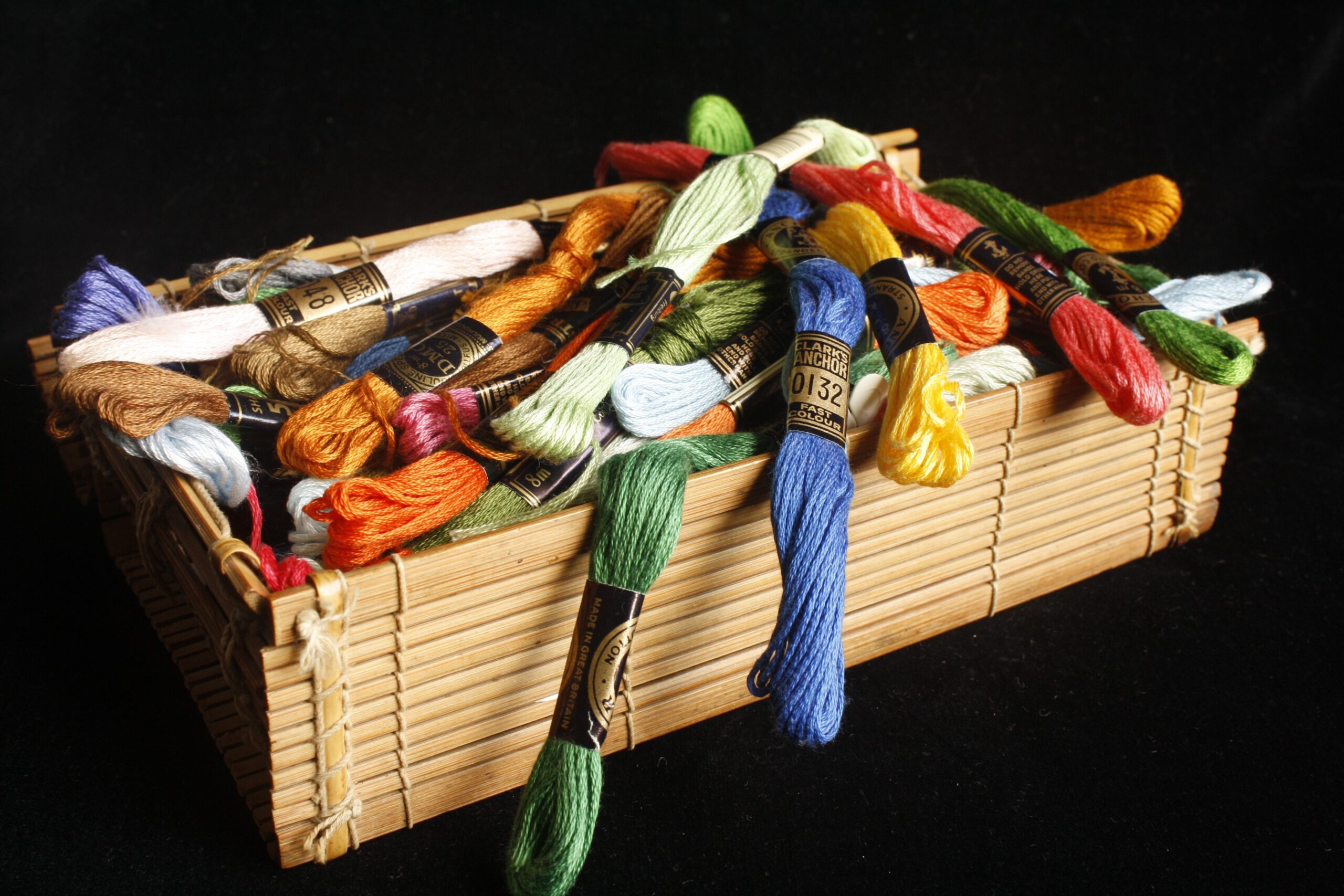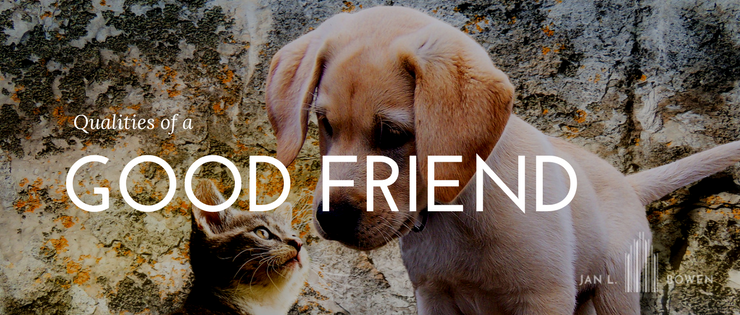Needlework, in its myriad forms, has a rich history of connecting people — individually and communally. And as the strands fuse on fabric, individuals stitching connect. Perhaps not as visibly, needlework also serves to deepen spiritual connection personally and collectively.
A definition of spirituality that transcends doctrine befits needlework. Gary Kowalkski in The Souls of Animals defines spirituality as “the development of a moral sense, the appreciation of beauty, the capacity for creativity, and the awareness of one’s self within a larger universe as well as a sense of mystery and wonder about it all’.
The Connection
That development of beyond ourselves is the strand of connection between spirituality and needlework. It is the thread between the individual and community, and the personal and the collective.
The repetitive nature of needle and thread connecting to create pattern and form on fabric, or needles twisting yarn into comforting objects or warm garments, invites reverie. The mind wanders at random bringing us to a somewhat dream-like state, half inside ourselves and half outside, tending to the task at hand.
Sometimes our mind focuses on the mundane issues in life. But other times, we discover those thoughts traveling beyond the practical to more mystical pondering. All the while, our strands continue their pattern, connecting our needlework together
So what exactly are the specific elements of needlework that invite spiritual expansion? They’re the components already present in every form of needle art. Let’s explore some examples.
Elemental Tools of Needlework
Needlework has been part of life since ancient civilization. While acknowledged from existing substantiation that the earliest forms were created from necessity (e.g., sewing tents and garments), some ancient evidence on boots, hats, and clothing show signs of adornment via decorative stitches. Perhaps these were a declaration of identity, if not an outright expression of creativity.
It’s impossible to recreate and know another’s thoughts while they were stitching, so there will always remain some mystery behind historical needle arts. But what we understand are the enduring elements of needlework, and the implements required to create it.
Tools needed for all forms of needlework (i.e., embroidery, needlepoint, sewing, applique, knitting, crochet, etc.) are very simply a form of needle, a type of fiber, and a variety of canvas. In addition, needlework requires time and creativity. And it frequently delivers much more.
The Magic of Time and Creativity
The requirements of time and creativity are the components that give back more than they ask for because they are the elements that connect to a personal expansion of self. They are the strands that transcend the needleworker beyond their canvas. This personal expansion is the crossroad that bids us to deepen our spirituality. Once we look beyond ourself, we peek into the realm of spirituality and expand our growth, however we choose to define it.
Any needlework project takes time. Time to select the project, the materials, assemble the tools and project, and then, time to make the project itself. But as much time as it takes, it gives back. Possible, it gives back even more than it takes.
Given time, we have the freedom to contemplate as we create. In the space of time, this contemplation invites us to sort ideas, beliefs, and concepts.
As we create, our hands move and thoughts float freely. Stitches form on fiber and thoughts take shape. But more than that, ideas, awareness, feelings, and concepts unfurl alongside with the canvas.
The blank canvas is a fresh page for our notions — mentally and physically. As the design is stitched, so often, is our belief or concept.
Questions Form
Perhaps for the first time or the first time in a long while, we have the liberty to ponder the big questions of life. There is a relative peace of mind as thoughts form, even if answers don’t immediately follow.
Where do we fit in life and in the world? What is our individual role? How am I measuring up? What can I contribute?
More ideas generate as we consider these questions over time. New ideas foster creativity, springing from a desire of personal expression. We become inspired to show an idea or a feeling or a vision via a unique form. And we have the outlet in our hands through our needlework.
As creative people know, it’s uncomfortable to repress creativity. Unique expression asks — indeed, sometimes pleads — to be released.
As we allow this outlet of creativity, there is personal growth. When it’s born from internal exploration and personal growth and expansion, something of the individual has gone into the creation’s delivery. The result may bring some difficulty along the way, but it always results in a renewal — a deepened spirituality.
Power of Questions
There is power in posing questions. Asking questions opens possibility. But peace of mind comes only once they are addressed and resolved.
Expressing creativity doesn’t automatically answer the burning questions that arise in contemplation while stitching, though. They, too, will sit, pleading until addressed — like creativity.
When we question ourself, we allow ourself to examine previously held beliefs and values that may have caused us to think or behave in certain ways. In private, we have the privilege of releasing various ideas, and we are safe to change without fear of ridicule.
This quiet time allows us the freedom to examine, the possibility to consider, and the opportunity to change. Still in privacy and safety, we can choose to act, when to take chosen action, or not to act at all.
We can experiment with abandon, both on fabric or canvas, and in our mind. It all begins with a question, and a stitch.
All Roads Lead to the Inner World of Spirituality
There is a long-held tradition of a daily practice as part of spiritual growth and development. Wed to no specific religion, and crossing many, a daily practice isn’t assigned to theology, although many theologies practice them.
They are executed, rather, for the benefit of promoting a transcendence beyond the personal “self”. At the same time, an inner peace of mind, well-being, and increased insight is often attained through a daily practice. By practicing a specific method routinely (e.g., needlework), we are able to shed daily concerns, and as we do, other thoughts are free to enter.
Regardless of whether we stitch in a group or solo, even when not practiced daily. needlework has the same quality of bringing one into — and outside of — one self simultaneously, transcending the moment. It can lead us into an inner world and down the path of spirituality.
Solo work
Needlework has long held a prominent role in healing. Individuals who have never practiced any form of it previous to a health crisis often turn to stitching as a welcome form of comfort in the midst of uncertainty. They find it supplies a reliable source of soothing peace of mind as well as meditation due to the repetitive nature of stitching.
Perhaps most often, the majority of us stitch alone. This private time can frequently be the only quiet time found in the midst of an active schedule.
Interestingly, components of needlework that are healing are also those that lead to our deepest spirituality. At some point, it becomes irrelevant whether we are creating to heal ourselves or others, if indeed it was ever a conscious intention.
The reality is we impact both concurrently. We find a sense of peace, meditation, mindfulness, and we learn there is solace in this inner quiet to access.
Communal contribution
Groups form to either work on their independent projects or to contribute to a collective effort. Many well-known needlework projects and art are accomplished in this way. Historically, groups of stitchers met to record history on fabric, as well as find companionship and community and speed the process to finish practical quilts for households.
The AIDS Memorial Quilt brings attention to those who lost their lives to HIV/AIDS. It is considered the largest community arts project in history, and serves as a strong example of stitching simultaneously impacting the stitcher and those viewing or in possession of the final product.
Many cancer knitting drives, charities and organizations exist, some at a neighborhood level, and others globally. Knitting for Cancer provides a comfort bag for all cancer patients per request, with volunteer knitters providing the products. Knitting for Cancer Charities provides information on what is needed, where to go for it, and how to help.
Knots of Love solicits volunteers to make hats and blankets for neonatal intensive care unit (NICU) babies. Some volunteer knitters work individually, while others work in groups to contribute to the project.
The contribution to a greater good is obvious in examples like these, but even when a group forms to work on individual projects, the benefits are profound and a strong counterpoint to isolation and loneliness rampant in our world. As the United States continues to become increasingly connected digitally, our epidemic of isolation and loneliness deepens. And this epidemic is not limited to the U.S. The World Health Organization cited loneliness as a global health threat.
In groups where we stitch individually, sharing our creativity, we expose our vulnerability. We trust the group with unique aspects of ourselves as we unfurl these clues on the cloth, fiber, or canvas. In turn, we see others do the same, and value the connections.
This vulnerability creates genuine relationships — friendships with others who understand who we are. We have an opportunity to exercise empathy, trust, and acceptance.
Additionally, in relationships, others reflect back to us how they see us. We may learn new perspectives in how we appear through others’ eyes.
One Shining Example Sewn Together
A beautiful example of the individual needlework artists coming together for the benefit of another shines through Hawaiian quilts. Quilting has a long history of communal work and varied pattern and design, encompassing the globe.
When choosing designs, motifs representing nature, beliefs, and legends are frequently seen. Traditionally, Hawaiian quilts will have large, bright motifs appliqued symmetrically. Historically, in honor of the woman designing the pattern, credit showed on reverse of the quilt. And patterns were only used by permission.
Hawaiian quilts are specifically reputed to incorporate the quilter’s mana as they stitch. In Hawaiian culture, mana is an individual’s spiritual power. It is vital to understanding Hawaiian culture. The quilter will sleep underneath the object before gifting it to enhance its power.
This example of blending significance of setting (i.e., nature), the individual’s spirituality with respect for others, as well as the communal coming together, is a beautiful illustration of how needlework has the potential to work in powerful ways. An object created for warmth has the capacity to become a vehicle for personal growth.
Spirituality: Lessons Everywhere
As our eyes are opened to ourselves, we may find surprising lessons for reflection in our needlework creations as well. As with life, challenges often arise. Knotted threads and yarn somehow appear instead of the flawless intended design, holes in knitted sleeves rather than a perfect turn.
Problem solving with our creations can reflect life lessons in life as well. The contemplative time spent finding the solutions can at the very minimum encourage and teach patience, and often, much more.
Many Reasons, Many Roads
Why does anyone pick up the tools and start any of the many forms of needle arts? There are likely as many reasons as there are methods.
Each reason will lead down the path of exploration. How that exploration turns, and what is at its end is the needleworker’s personal journey.
Needlework isn’t typically rushed. Neither is a spiritual journey. Stitch by stitch, breath by breath, step by step, progress is made. And while progress may be undefined in a spiritual journey, when needlework is part of the process, the canvas can become a beautiful reflection of the process.
I have several books you might find helpful: It’s Not That Complicated: How to Create a Personalized Template of Alignment, It’s Not That Complicated: How to Create a Personalized Template (the Toolkit), and Toolkit of Alignment. For needlework-related exploration, please investigate Clare Hunter’s amazing Sewing Matters.
Looing for more guidance on daily practices and spiritual development? I have several books you might find helpful: It’s Not That Complicated: How to Create a Personalized Template of Alignment and It’s Not That Complicated: How to Create a Personalized Template (the Toolkit), and Toolkit of Alignment. For any and all additional textile-related exploration, please enjoy exploring the wonderful website of art and textile historian Rebecca Devaney.




